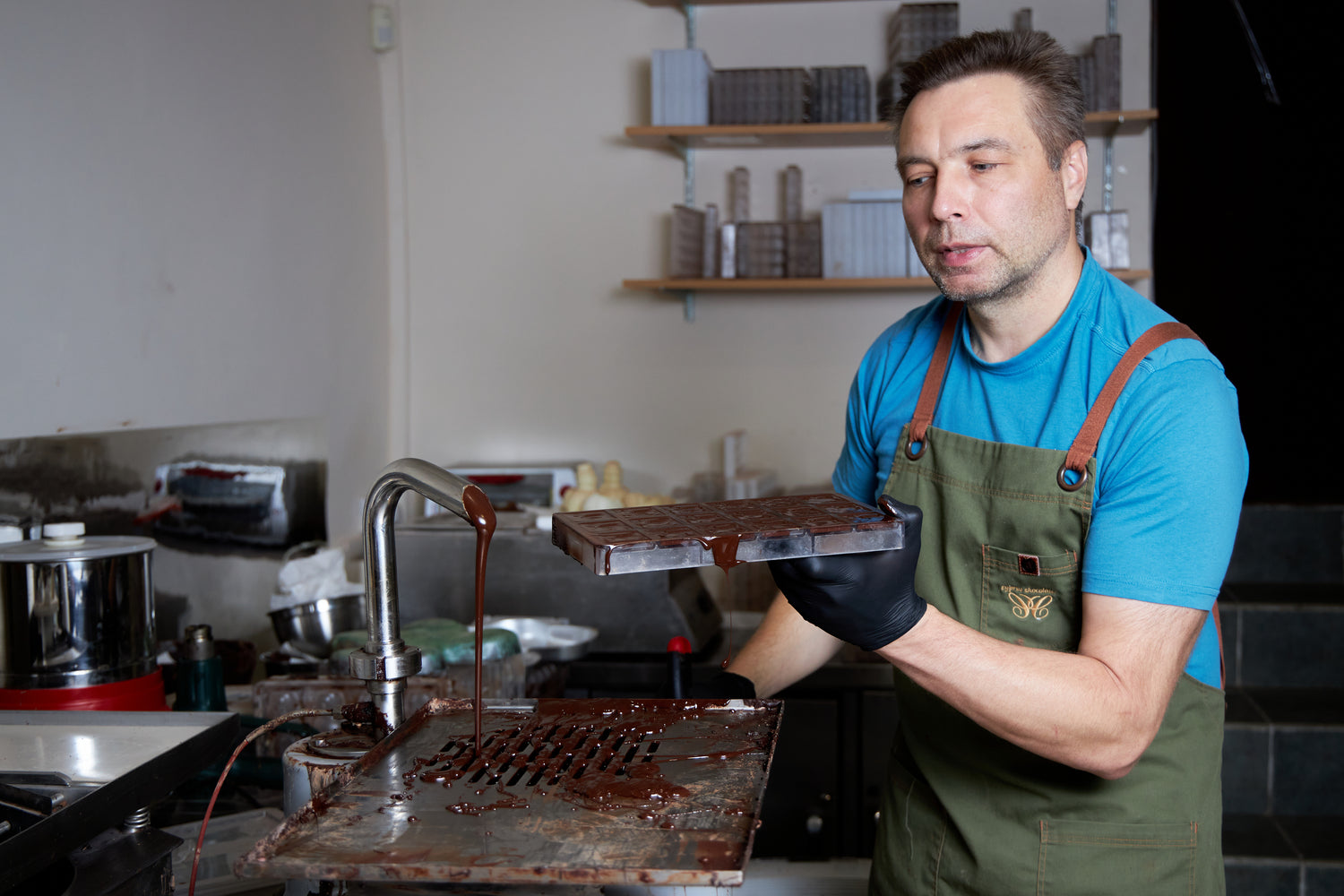Chocolate making process
Before coming to us, cacao beans we receive first go through a long journey.
HARVEST

CRACKING
Carefully picked up cacao pods were cracking

FERMENTATION
After the beans are placed in containers made of wood, allowing the removal of the fermentation broth, and are covered with banana leaves. They are brewed and aerated regularly to ensure uniform fermentation.
DRYING
After fermentation, the beans still contain 60% moisture, which needs to be reduced to 7% to ensure conservation and transportation under optimal conditions. This is when the drying phase comes in. The beans are placed in full sun on large drying surfaces with the possibility of quick coverage in the case of rain. During the drying phase, an average of two weeks, the beans are sorted briefly to remove residual pulp or large foreign objects.
ROASTING
Timed and coordinated by the master roaster, roasting aims to develop the flavours of chocolate and to eliminate moisture. This procedure consists of roasting cocoa beans in a roasting machine at a temperature of 120 ° to 140 ° for 20-30 minutes.
CRUSHING
After cooling, the beans are transported to the crushing machine. The crusher reduces the beans into particles a few millimetres in size. The body of the bean is separated from its shell using a screen on which a stream of hot air is blown. These crushed beans with their skins shed are called nibs.
GRINDING
The nibs are then finely ground between steel cylinders. Under the twin influence of grinding and heat, they turn into a liquid paste: cocoa mass or cocoa liquor. This paste consists of cocoa butter (natural cocoa fat) and a dry bean substance. The paste is then refined to reduce its grading from 50 microns to 17 microns. When making milk chocolate, milk and sugar are added at this stage.

